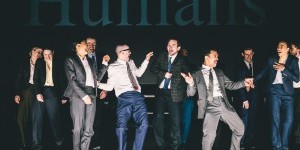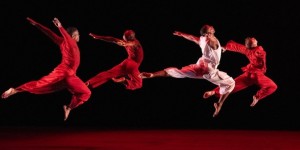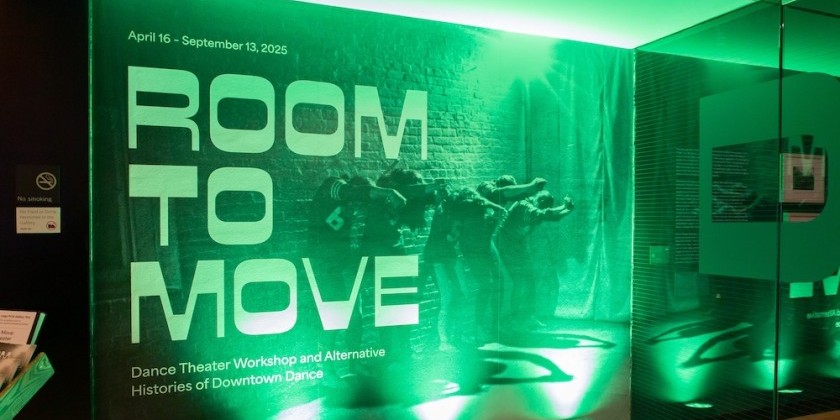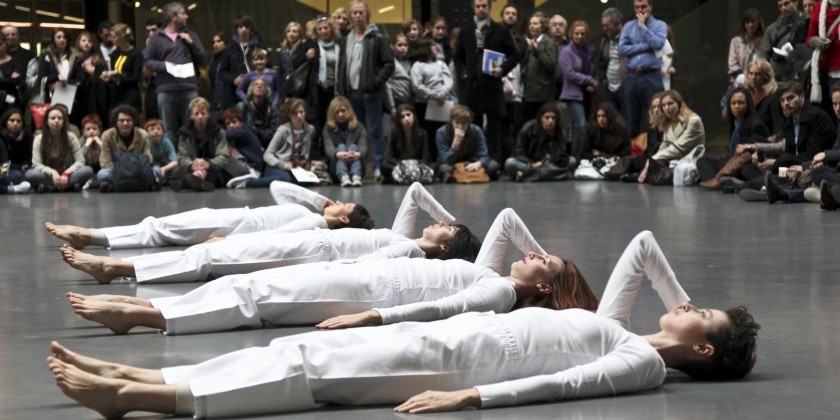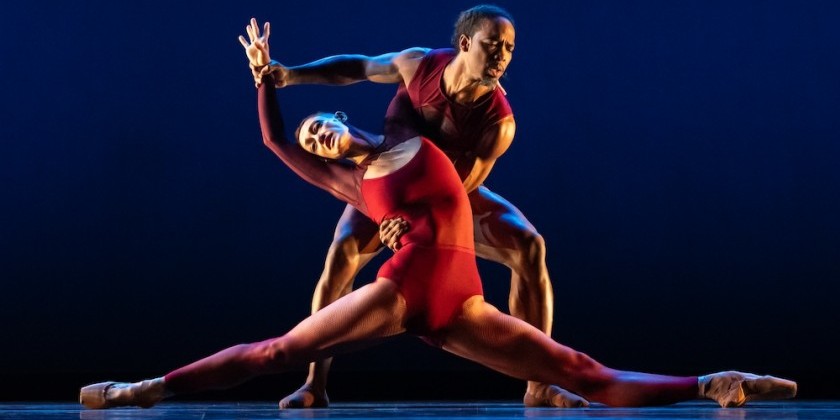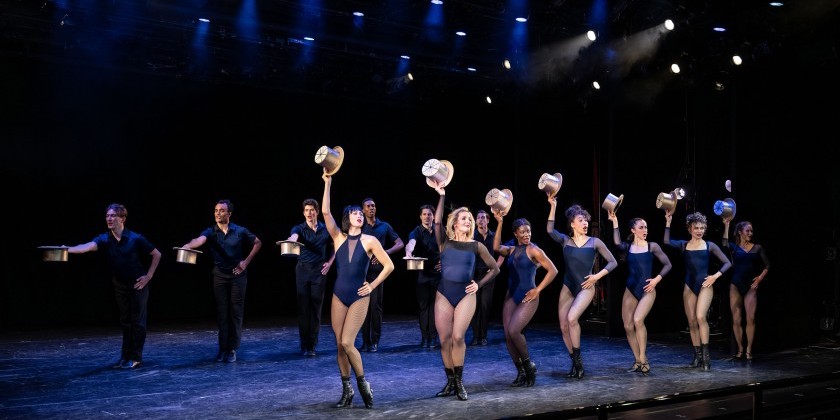
MOVING VISIONS: Dominique Mercy of Tanztheater Wuppertal on Dance Theater or Tanztheater
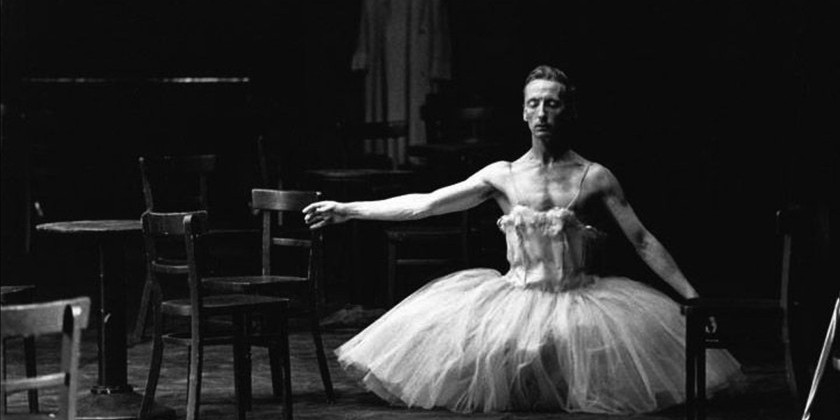
In the final article of her Moving Visions Editorship for The Dance Enthusiast, Anabella Lenzu interviews Dominique Mercy, asking him for his defintion of Dance Theater or Tanztheater.
About Dominique Mercy:
Born in 1950 in Mauzac, France, he received his first dance lessons at the age of six from Madame Dupradeau in Talence. For three years he studied with Madame Germaine Lalande and in 1965 joined the Grand-Théâtre de Bordeaux. In 1968, he switched to Amiens to the newly formed Ballet Théâtre Contemporain under the direction of Jean-Albert Cartier and Françoise Adret, who were interested in collaboration between choreographers, painters and composers. Mercy danced in pieces by choreographers including Adret, Félix Blaska, Jean Bailée, John Butler, Michel Descombey and George Skibine.
Manuel Alum from the Paul Sanasardo Dance Company in New York came as a guest teacher and in 1972 invited Mercy to the Saratoga Summer Festival. There, he met Pina Bausch, who was showing her choreography Philips 836885 D.S.Y. and teaching in Saratoga. He identified with her movements and had the feeling he finally found his artistic home. He was delighted when she invited him to Wuppertal to join her new company in 1973 along with Malou Airaudo.
Mercy has been a dancer at the Tanztheater Wuppertal for 45 years. He was involved in the creation of 32 pieces by Bausch. When Bausch died in 2009, Mercy took over the artistic direction of Tanztheater Wuppertal for four years, together with Robert Sturm. Mercy has been awarded the Chevalier des Arts et des Lettres, the Bessie Award, and the Légion d'honneur, among other prestigious citations.
Anabella Lenzu, Moving Visions Editor for The Dance Enthusiast: How do you define dance theater?
Dominique Mercy: Pina went back to this because at one point quite early in the years in Wuppertal when we started, she had the feeling that it was difficult to define the style or the direction she was taking. She chose this name because it's a sort of combination of art forms. It gives you possibilities, it opens doors.
Dance Theater is not a technique. It's just a name which you have to use because people need those labels. People need them to have the feeling that they understand, or that they can approach a little bit more easily what they see. When the movements are not enough anymore, then you go into the words. And when the words start to be weak again, then you go back to the body and to other things.
You try to find the shortest way, or the more legitimate or sincere way to be able to say what you want to as honestly as possible. Without the walls of definitions, you try to find the closest way to express.

This is very important because as an artist, you don't want to be labeled. Art is about freedom and experimentation. While I was studying and dancing the Anna Sokolow repertory with the guidance of my mentors Lorry and Jim May, what attracted me was the emotional and psychological explorations. How did you deal with these emotions working with Pina, and how did Pina think about that? I'm not only talking about the emotion of the performer, but also the emotions of the audience.
We worked a lot with those through improvisation, but we didn’t come up with complete answers to Pina's questions. She first absorbed everything we did: movements, scenes, or whatever we were responding with. And afterwards during this process, she would take things out for her own reasons.
She would say, "I would like to see this again and again," and then she would continue to select somehow. Sometimes we did things that were very touching or funny. Everybody reacted so spontaneously, including Pina. But then she always said, "Those things have to survive 567 times of being seen." She always said that she didn't really look with her eyes, she always looked with her stomach.
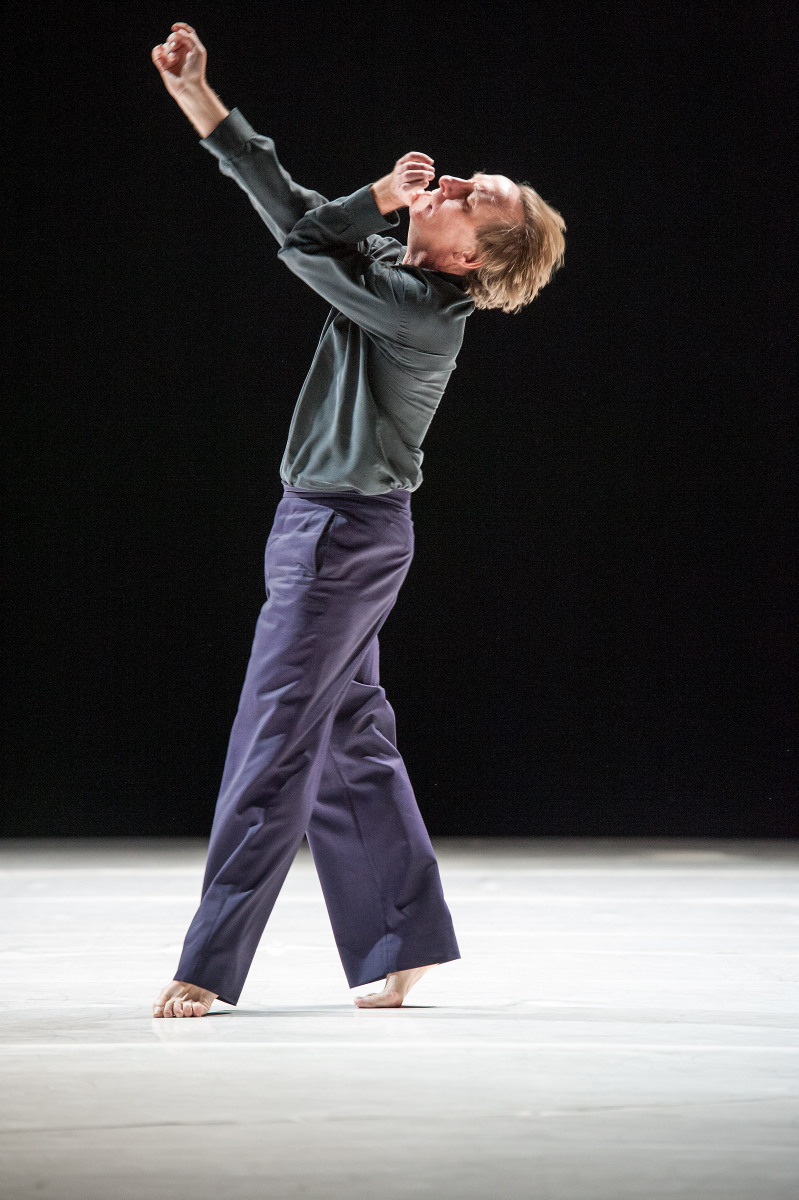
For her, her brain was in the stomach somehow, nothing intellectual. She had to respond to what she was looking for, and it had to touch her. She always considered herself an audience member. The performance had to come through her and to touch her, either in a funny or an emotional way.
If it didn't really have the same impact after many repetitions, she would get rid of it, or she wouldn't put it in for that production. I think all the performances from Pina were based on emotions. The construction of the form is always guided by emotion and to be as precise as possible.
She never worked on scenes. It was just, like I said, a flow of questions from her and more or less a flow of responses from us, which would be written down or recorded with video to make notes or archives later regarding that piece.
She was always trying… Even if she liked it, she still tried another option.
And where did the questions come from?
She prepared all the general ideas, but she would never say where they came from. She never explained or told us why she asked those questions. It was our job to try to guess the direction, or where she was going by looking back at the question or figuring out how the question led us in a certain direction. Our job was not to try to understand the answer completely. And when this process took too much space and time, she would stop us. She would say “Just answer what you understand.”
She would never let us go too deep.
Let’s talk about motion and emotion.
There were some questions directly connected to emotions about movement, about dance, which aren't connected to emotion. So, of course, automatically, you try to find vocabulary to connect to the emotion to where it came from, somehow. The emotion could have been sometimes the starting point for the movement, but sometimes it could have been the opposite.
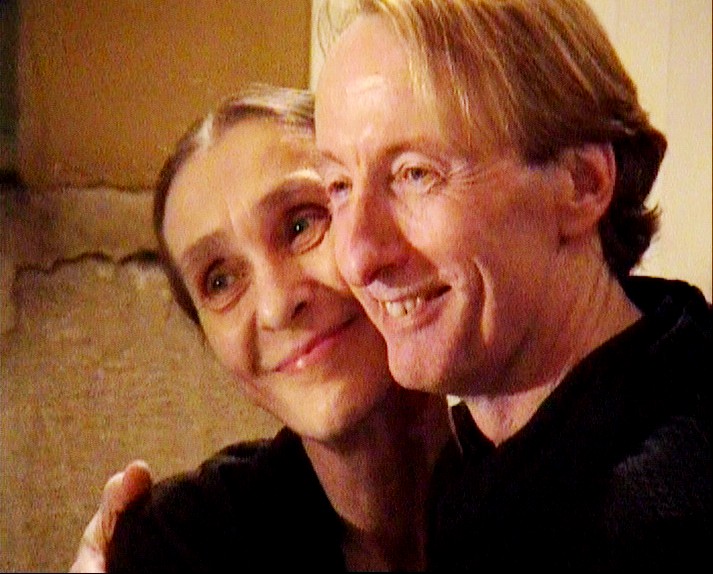
Let’s talk about your training as a dancer. How did you feel when Pina gave you 'permission' to speak on the stage? How was this for you as a performer?
The first piece we did together was a piece called Fritz. At that time, I had to do something sort of like coughing. We started to build a dance with this coughing. And also, it was there in that moment where I was just singing or humming a little, or doing small movements. A world opened somehow, but at the same time, it was something completely natural, something obvious.
In the technique that Pina was using, the way she used old qualities and language — it put the technique into theatre in a way. As I was speaking, I was saying things just by moving, she gave me the possibility to enjoy, or to discover that that there are no boundaries. Movement is just is just a way to get somewhere. There is an urge in what you do which is so fantastic somehow. You just go for what you need. You just go for it. And that was so strong from the beginning with Pina.
What was the role of the dramaturge in Pina’s work?
Well, this is a little bit awkward because at times there was a little bit of a help with text or things like this. I would say it’s more like somebody who comforted her or helped her to to make some choices.
The only official dramaturge was actually Raimund Hoghe, and it was more in order to give her confidence or to share thoughts and impressions. He was staying back and not taking any position, more like an advisor. The dramaturge was someone she could refer to or ask questions of. He was like another audience member.
I love that you say that Pina considered herself an audience member. What about the character development an psychological aspect of her work?
If she constructed something and she put you in the piece, you suddenly discovered that you have a sort of red thread through the piece which you didn't realize. I remember, in the piece “2 cigarettes in the dark” she told me, “You are a wood puppet and you are in love with Columbine.” In Germany, there is a character which is called Caspa, and in French we say Guignol. She had quite a lot of questions about this figure. I responded somehow strongly to this, and created this black puppet Guignol character. I was very touched by the question and the figure, and the result was a very strong figure. We never talked about it. It just ended up like this, you know?
We didn't work specifically on something psychological from the beginning, to try to develop a character or something. With different methods and ways, it was just like she sort of entered this character, this figure and gave me the possibility to have different colors with it.
Created in 2020 as a way to lift up and include new voices in the conversation about dance, The Dance Enthusiast's Moving Visions Initiative welcomes artists and other enthusiasts to be guest editors and guide our coverage. Moving Visions Editors share their passion, expertise, and curiosity with us as we celebrate their accomplishments and viewpoints.
Created in 2020 as a way to lift up and include new voices in the conversation about dance, The Dance Enthusiast's Moving Visions Initiative welcomes artists and other enthusiasts to be guest editors and guide our coverage. Moving Visions Editors share their passion, expertise, and curiosity with us as we celebrate their accomplishments and viewpoints.





